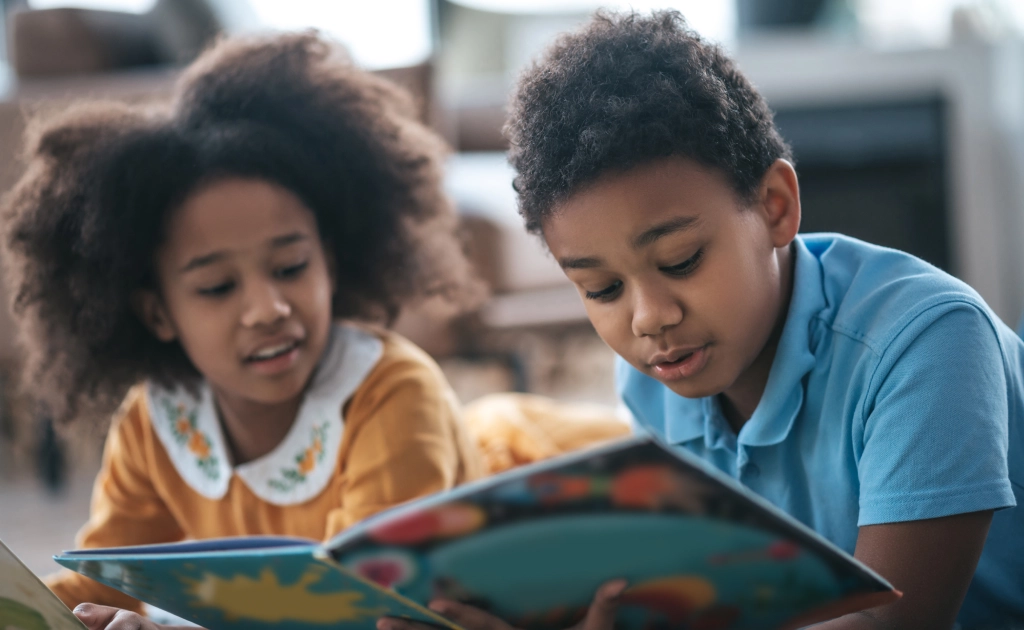Storytelling is a powerful tool in early learning that shapes your child’s cognitive development, language skills, and emotional intelligence. Engaging stories enhance their critical thinking and help them expand their vocabulary. As they connect with characters, they learn empathy and recognize their own feelings. Plus, storytelling sparks imagination and creativity, paving the way for inventive thinking. Take the time to create magical moments through tales, and you might find even more amazing ways to inspire creativity together.
The Role of Storytelling in Cognitive Development
As you delve into the world of storytelling with young learners, you’ll discover how it sparks cognitive development in remarkable ways. Engaging narratives introduce children to narrative structures, helping them understand beginnings, middles, and ends. This structure enhances their cognitive processing, allowing them to organize thoughts and ideas more effectively.
As children listen to and create stories, they’re not just entertained; they’re developing critical thinking skills. They learn to make connections between characters, events, and emotions, which deepens their comprehension. Storytelling also encourages imagination, inspiring kids to visualize scenarios and outcomes. By fostering these cognitive skills early on, you’re setting them up for success in learning and communication. Ultimately, storytelling enriches their minds and nurtures a lifelong love for learning.
Enhancing Language Skills Through Narratives
While you guide young learners through the enchanting world of narratives, you’ll find that storytelling is a powerful tool for enhancing language skills. By engaging with stories, children develop their language acquisition in dynamic ways. Here are some key benefits:
- Vocabulary Expansion: Exposure to new words in context.
- Understanding Narrative Structure: Recognizing beginnings, middles, and ends.
- Listening Skills: Enhancing focus and comprehension.
- Expressive Language: Encouraging children to share their thoughts and ideas.
- Imagination and Creativity: Stimulating creative storytelling and dialogue.
Fostering Emotional Intelligence With Stories
When you introduce stories to young learners, you’re not just sharing tales; you’re also opening doors to understanding emotions. Through relatable characters and situations, children can forge emotional connections, allowing them to recognize and express their feelings. As they follow a character’s journey, they experience joy, sadness, and anger, fostering empathy development along the way. You can encourage discussions about the characters’ emotions, prompting kids to share their own experiences and feelings. This practice not only enhances their emotional vocabulary but also helps them understand the perspectives of others. By weaving storytelling into your teaching, you nurture emotional intelligence, equipping children with the tools they need to navigate their own feelings and build strong relationships with those around them.
Cultivating Imagination and Creativity in Children
Stories not only help children understand emotions but also spark their imagination and creativity. When you share tales, you invite your child into worlds filled with endless possibilities. By using story prompts, you can encourage them to think outside the box and create their own narratives. Here are some ways storytelling cultivates their imaginative skills:
- Encourages inventive thinking
- Enhances problem-solving abilities
- Fosters empathy through diverse characters
- Inspires creative play and role-playing
- Develops language and communication skills
Practical Tips for Storytelling at Home
To create a vibrant storytelling atmosphere at home, start by setting aside dedicated time for sharing stories together. Choose stories that resonate with your child’s interests; story selection plays a crucial role in capturing their attention. Incorporate interactive storytelling by asking questions and encouraging your child to predict what happens next. Use props or puppets to bring characters to life, making the experience even more engaging. Don’t hesitate to use different voices for characters—this adds excitement! Lastly, invite your child to tell their own stories, fostering their creativity and confidence. Remember, storytelling isn’t just about words; it’s about creating connections, sparking imagination, and nurturing a lifelong love for stories. Enjoy these moments—they’re precious!
Frequently Asked Questions
How Can I Choose the Right Stories for My Child’S Age?
To choose age-appropriate stories, consider themes that resonate with your child’s experiences and interests. Look for books with strong character development, fostering empathy and understanding. You’ll spark their imagination while nurturing essential life skills.
What Types of Stories Engage Children the Most?
To engage your child, choose a mix of fairy tales, adventure stories, and animal fables. Incorporate moral stories, interactive tales, and cultural narratives, along with bedtime stories and educational narratives, to spark imagination and learning.
How Often Should I Read to My Child?
You should aim for daily reading, making bedtime stories a cherished routine. This not only nurtures your child’s imagination but also strengthens your bond, creating a loving environment where stories come alive and dreams flourish.
Can Storytelling Be Beneficial for Shy Children?
Absolutely! Storytelling can help reduce shyness and build confidence in children. Engaging them in stories allows them to express themselves, relate to characters, and practice social skills, making it a nurturing experience for their growth.
Are There Specific Storytelling Techniques to Use With Toddlers?
Absolutely! Use repetition techniques to reinforce key phrases, helping toddlers engage. Incorporate interactive storytelling by asking questions or encouraging them to participate, making the experience fun and memorable. You’ll spark their imagination and language skills!


